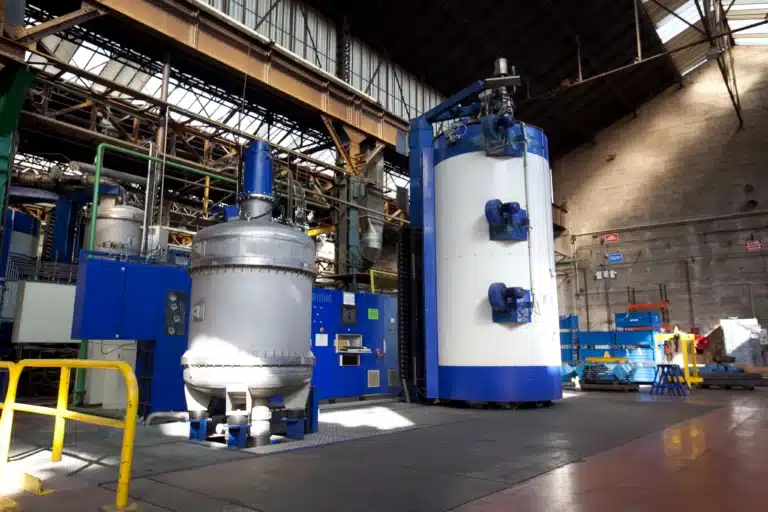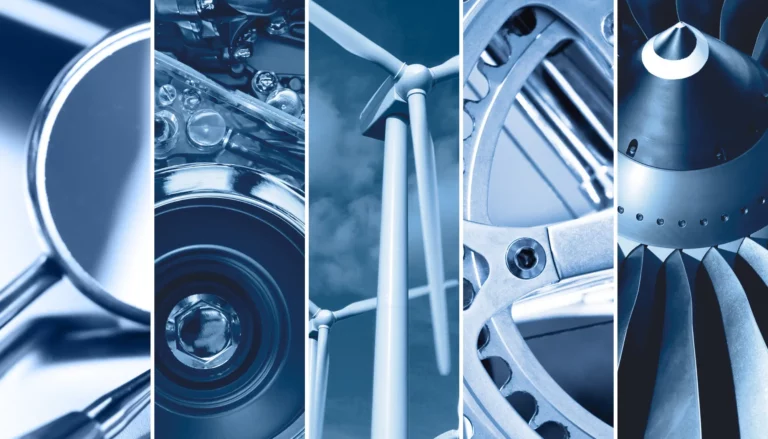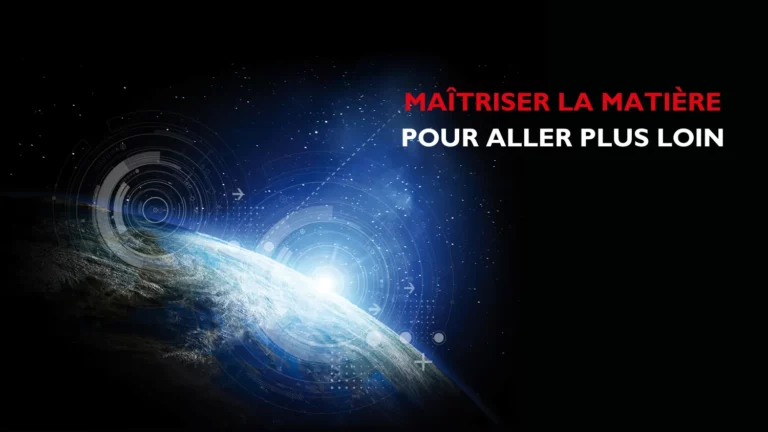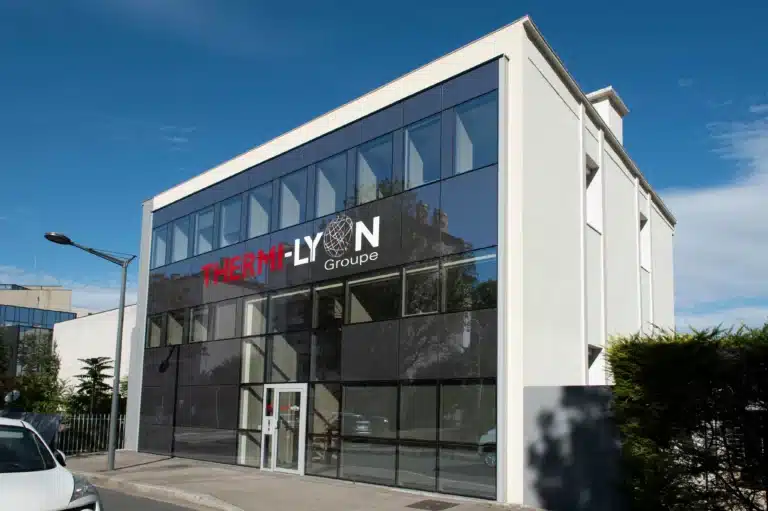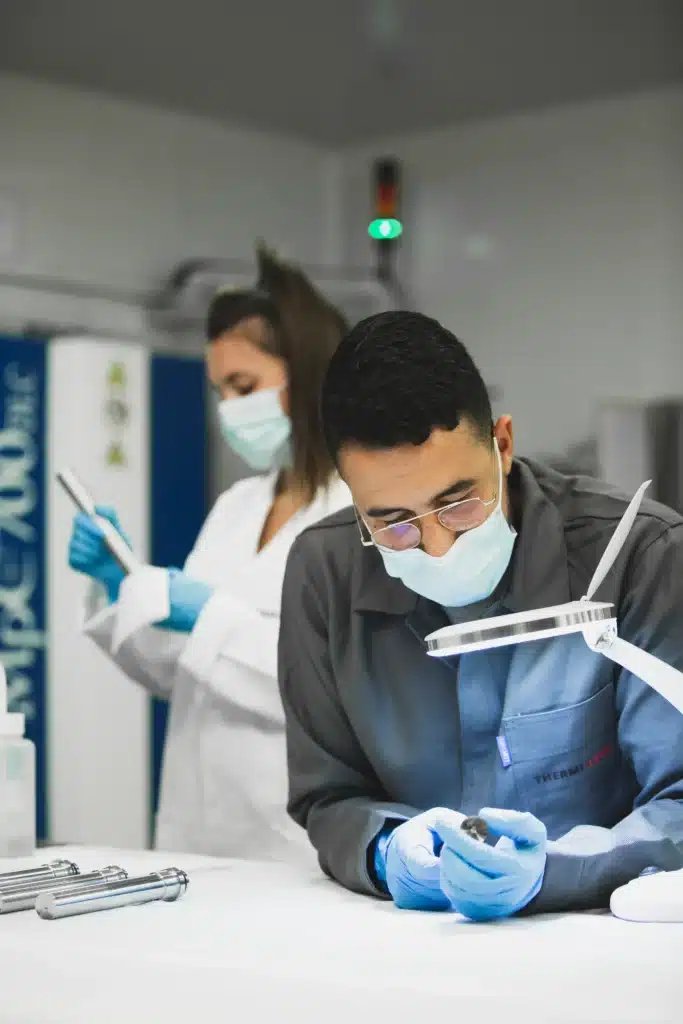Press-hardening serves a very specific purpose: to prevent part deformation during the rapid cooling phase induced by quenching. This method improves the performance of steels by giving them a martensitic structure, without the need for reworking. Designed for large production runs of parts with complex geometries, press-hardening is both highly effective and economical.
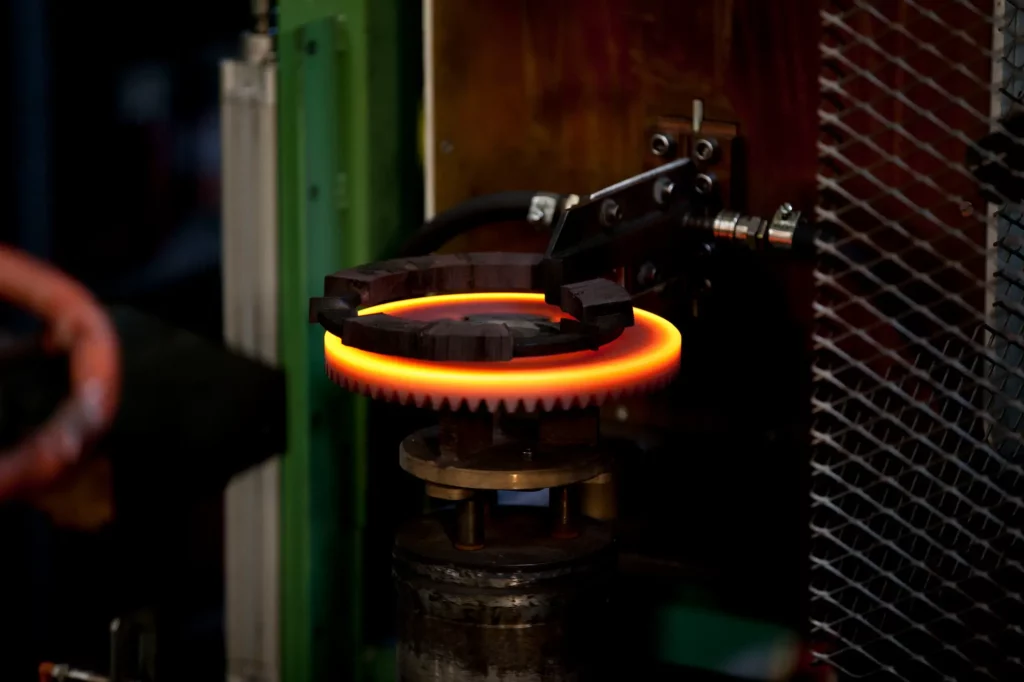
How does press quenching work?
Developed in the 1970s, press hardening includes, as its name suggests, a conventional hardening operation. The parts to be treated are heated to between 800 and 1000 degrees Celsius and then rapidly cooled, with the parts and tooling immersed in a fluid (oil). The particularity of this method lies in the layout of the parts, which are installed in specific tooling, integrated into presses, designed to adapt to their geometry. Parts are firmly held between a punch and a die, and the pressure exerted on the materials during the cooling phase greatly limits, if not totally prevents, the appearance of deformation, thus maintaining their dimensional stability. Following press-hardening, the microstructure of the parts is composed of fine, homogeneous martensite, giving them a very high degree of hardness. The entire operation is controlled by a robot, which monitors the temperature of the atmosphere in real time and handles the parts.
This process was initially developed for automotive manufacturers, to process large series of parts with complex geometries. In fact, this method is perfectly suited to the processing of large numbers of parts on a production line: since the cooling cycle is automatically programmed, it can be repeated ad infinitum. What's more, the circulation of quenching fluid around the part held in the press results in uniform, controlled cooling that can easily be reproduced many times over.
Advantages of press hardening
Press-hardening remains a very popular technique, as it offers a number of particularly interesting advantages: in addition to considerably reducing the risk of deformation and form deviations, it offers the possibility of processing large series of parts and, ultimately, real cost savings.
Precision technology for large production runs
As mentioned above, press-hardening is designed for large production runs of parts with complex geometries, as the tooling is specially manufactured for this purpose, enabling them to be processed on the assembly line. The parts are not deformed at the end of the process, so no additional machining thickness is required, which means real time savings for the end customer. The result is real savings in both materials and costs.
Moreover, since press tools have to perfectly match the shape of the parts to be processed, their manufacturing cost can be quite high. This method is therefore much more attractive for large production runs. Many axle components, such as pinions and gear rings, are press-hardened, as they are expensive and difficult to rework by machining or grinding.
An economical process for the long term
While it remains more attractive to use this technique for large quantities of parts to be processed, the initial investment pays for itself very quickly. Complex, machined parts no longer need to be reworked, which means savings in material, manpower, time, energy and, indeed, money for the customer.
Press quenching with induction heating, an ecological innovation from Thermi-Loire
A few years ago, Thermi-Loire developed a press-hardening process with induction heating. This process no longer requires the use of furnaces, but special devices that heat on demand. As a result, press-hardening with induction heating ensures greater energy savings: no need to keep large furnaces running continuously, the system relies on the induction of a magnetic field to heat the parts. It switches on and off on command, unlike traditional ovens, which need a week to switch off and restart, and relies solely on an electrical generator. As a result, the induction method emits no CO2.
In addition to preserving the environment, which is part of Thermilyon's DNA, induction hardening also guarantees minimal losses. As each part is treated individually, if one of them develops the slightest problem, the robot in charge of monitoring the operation takes care of the situation to prevent the rest of the batch from suffering complications. Only one part is affected, not the whole series.
Press-hardening has come a long way since its inception in the 1970s. Designed to efficiently process large runs of complex geometries, this method saves time and money, as components do not require reworking after treatment. In keeping with its commitment to innovate for the benefit of its customers and to protect the planet, the Thermilyon group's subsidiary Thermi-Loire has also developed a press-hardening technique with induction heating. This method, which consumes only electricity, is much cleaner and more economical than the usual version of press-hardening with continuous furnaces. The Thermi-Loire site is the only one in France to master this technology.
